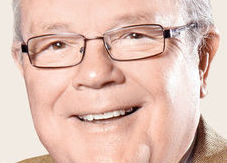By Peter Wagner
It’s no secret America’s newspapers are struggling to find their place in today’s social media society.
Many major metro dailies now only offer home delivery on Thursdays, Fridays and Sundays, the days they carry an exceptional number of high-revenue inserts. The balance of the week interested readers have to buy the paper at a convenience store or other dealer.
 In smaller markets that were once five or six-day-a-week dailies, publication has been cut to three times, twice or just once a week.
In smaller markets that were once five or six-day-a-week dailies, publication has been cut to three times, twice or just once a week.
Community news always has been important to society. The earliest humans recorded their experiences and challenges on cave walls in France as far back as 17,000 BC.
Newspapers have survived competition from radio, television and even early forms of the internet. So why the difficulty today?
For one thing society has become more diverse. There is more desire to be different and separate than to be of one mind and purpose. Where a community newspaper once brought a group of people together, many residents would just as soon see it torn apart.
For another, some publishers became arrogant. High profits and soaring circulation gains blinded them to the possibility of serious competition created in the form of shared information networks such as Facebook and Snapchat.
Local community
In many communities the passion for publishing, once driven by a local owner, has been lost to directives from upper management located in distant states. Many of those chains have no knowledge or understanding of the local community’s needs, motivation or history.
And worse, too many industry and community leaders have “drunk the Kool-Aid” and believed social media promoters are correct when they claim that freely shared individual social commentary is going to produce free, independent thinking and offer a cost-free way to advertise local businesses and create community consensus.
But nothing is free. Those same social media promoters have found ways to maximize their growing, international revenue by controlling who actually sees the message and by selling small company e-mail lists passing through their system to like larger online retailers like Amazon and Walmart. Small businesses, believing they are creating their own market are simply helping increase the prospect list of their greatest competition.
Additionally, local and national blogs and social messaging does little to create a united community. Such one-sided voices often broadcast unchecked and even fake news. Many of those sources cannot be trusted as balanced or even intending to share the truth. As former President Barack Obama stated on “CBS This Morning” on Wednesday, Dec. 27, those who depend on social media for their news can be “cocooned in information that (only) reinforces their current biases.”
Interestingly, the outside media that most often reports the “falling” numbers in newspaper circulation are the over-the-air non-cable television networks that have problems of their own. The large and ever-growing selection of cable channels and live-streaming networks and the consumer’s ability to watch programs commercial free on Hulu or other servers has cut deeply into the local television station’s audience and revenue.
Are all newspaper dead or dying? Not necessarily. Some groups and many independent family-owned papers are taking steps to remain an important part of the community.
A recent comScore readership study reported 18- to 34-year-olds, long thought forever lost to print media, are spending more time reading printed newspapers than checking out the news online.
But publishing companies are going to have to work diligently at keeping their subscriber base.
Investing
That effort may include investing in a larger newsroom to write more original content. It may require investing in more computer programs and equipment. It will demand an expanded creative team capable of producing a more attractive, interesting design.
Keeping up with the future will surely require new forms of delivery to assure the subscriber gets dependable on-time “to the door service” as the post office’s delivery days and times diminish. That printed paper will have to be augmented with new, innovative online services and breaking news updates.
Finally, newspapers will need to offer an increased local presence in everything from being more visible reporting about all things important to the reader — the city council, college concerts, high school sports and local successes — to the sponsorship of both educational and simply enjoyable community events.
Newspapers will make it through the current storm to brighter days ahead. They are the heart of every community. They are the cheerleaders, fact checkers, community watchdogs and creators of community consensus and commitment.
Thankfully, that’s the kind of challenge we committed journalists can get excited about.
 Nevada Press Association The best in Nevada journalism since 1924
Nevada Press Association The best in Nevada journalism since 1924
